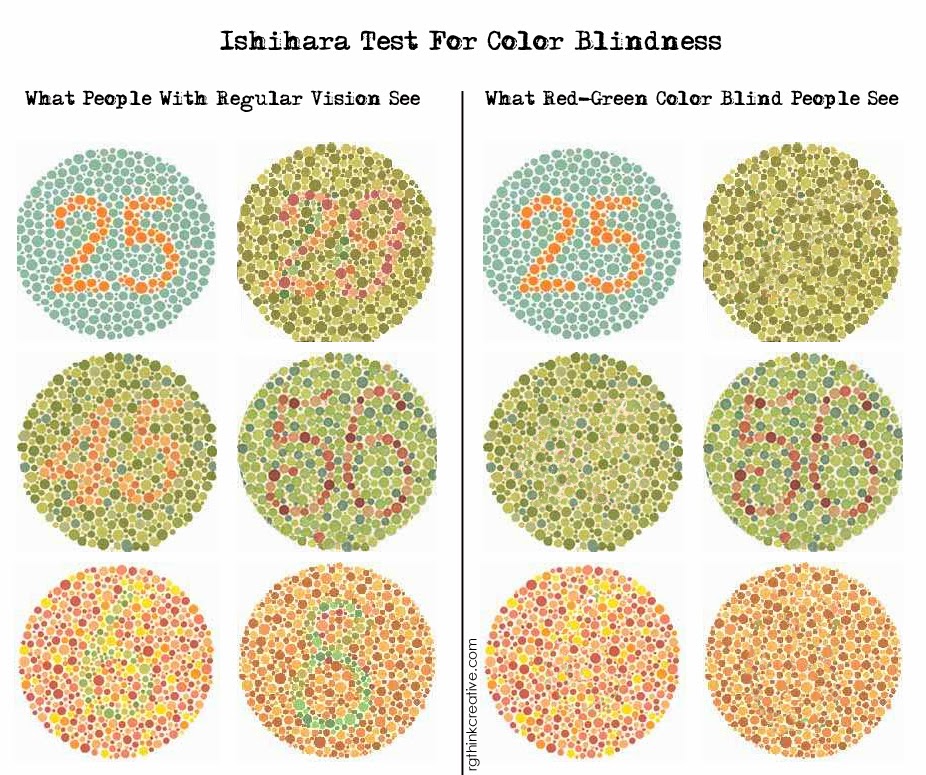Color blindness, a condition affecting millions worldwide, can significantly impact daily life. The color blind test is crucial for diagnosing this condition. This article delves into the intricacies of color blindness, the various types of tests available, and their importance in identifying and managing this condition.
Key Takeaways
- Color blindness affects the perception of colors, often making it difficult to distinguish between specific shades.
- Various color blind tests, such as the Ishihara Test and the Farnsworth-Munsell 100 Hue Test, are used to diagnose and understand the severity of color vision deficiency.
- Early detection through these tests can help individuals adapt and manage their condition effectively.

What is Color Blindness?

Color blindness, or color vision deficiency, is a condition where an individual has difficulty distinguishing between certain colors. This condition arises due to the absence or malfunction of cone cells in the retina, which are responsible for color perception. While complete color blindness is rare, partial color blindness, where individuals struggle to differentiate between shades of red, green, or blue, is more common.
Types of Color Blindness
There are several types of color blindness, each affecting color perception differently:

- Red-Green Color Blindness: The most common type, where individuals have difficulty distinguishing between red and green hues.
- Blue-Yellow Color Blindness: A rarer form where blue and yellow shades become indistinguishable.
- Total Color Blindness: Also known as monochromacy, this rare condition results in seeing everything in shades of gray.
The Importance of Color Blind Tests
Color blind tests are essential tools for diagnosing color vision deficiencies. These tests help determine the type and severity of color blindness, allowing individuals to understand their condition better and adapt accordingly. Early diagnosis can be particularly beneficial for children, helping them navigate educational settings more effectively.
Popular Color Blind Tests
Several tests are commonly used to diagnose color blindness, each with its unique methodology:
Ishihara Test
The Ishihara Test is the most widely used test for diagnosing red-green color blindness. It consists of a series of plates with dots of various colors and sizes. Each plate contains a number or pattern that individuals with normal color vision can identify. Those with color blindness may see a different number or no number at all.
Farnsworth-Munsell 100 Hue Test
This test is more comprehensive and assesses the ability to discern subtle color differences. Participants are asked to arrange colored caps in order of hue, testing their color discrimination capabilities. This test can identify various types of color vision deficiencies and their severity.
EnChroma Test
The EnChroma Test is an online tool that provides a quick assessment of color vision. It uses a series of images to determine the type and extent of color blindness, offering a convenient option for initial screening.
Interpreting Color Blind Test Results
Understanding the results of a color blind test is crucial for managing the condition. Test outcomes can guide individuals in making lifestyle adjustments and seeking appropriate interventions:
- Mild Color Blindness: May require minimal adaptation, such as using labeled or organized color-coded items.
- Moderate to Severe Color Blindness: Might necessitate assistive tools or technologies, such as color identification apps or specially designed lenses.
Adapting to Life with Color Blindness
Living with color blindness can pose challenges, but several strategies can help individuals adapt:
- Utilize Technology: Apps and software designed to help identify colors can be invaluable tools.
- Organizational Techniques: Labeling and arranging items by function rather than color can simplify tasks.
- Communication: Informing teachers, employers, and peers about the condition ensures understanding and support.
Educational and Workplace Considerations
Color blindness can affect performance in educational and professional settings. Teachers and employers can make accommodations, such as providing materials with high contrast or using symbols instead of colors for instructions, to support individuals with color vision deficiencies.
Future of Color Blind Tests
Advancements in technology continue to improve the accuracy and accessibility of color blind tests. Future developments may include more sophisticated online testing platforms and wearable devices that provide real-time color correction, enhancing the quality of life for those with color blindness.
Understanding and diagnosing color blindness through color blind tests is essential for managing this condition effectively. By identifying the type and severity of color vision deficiency, individuals can adapt their lifestyles and seek appropriate support. As technology advances, the tools available for diagnosing and managing color blindness will continue to evolve, offering new hope and possibilities for those affected.